Developed for
High Resolution Electrical Studies
Park Heterodyne KPFM
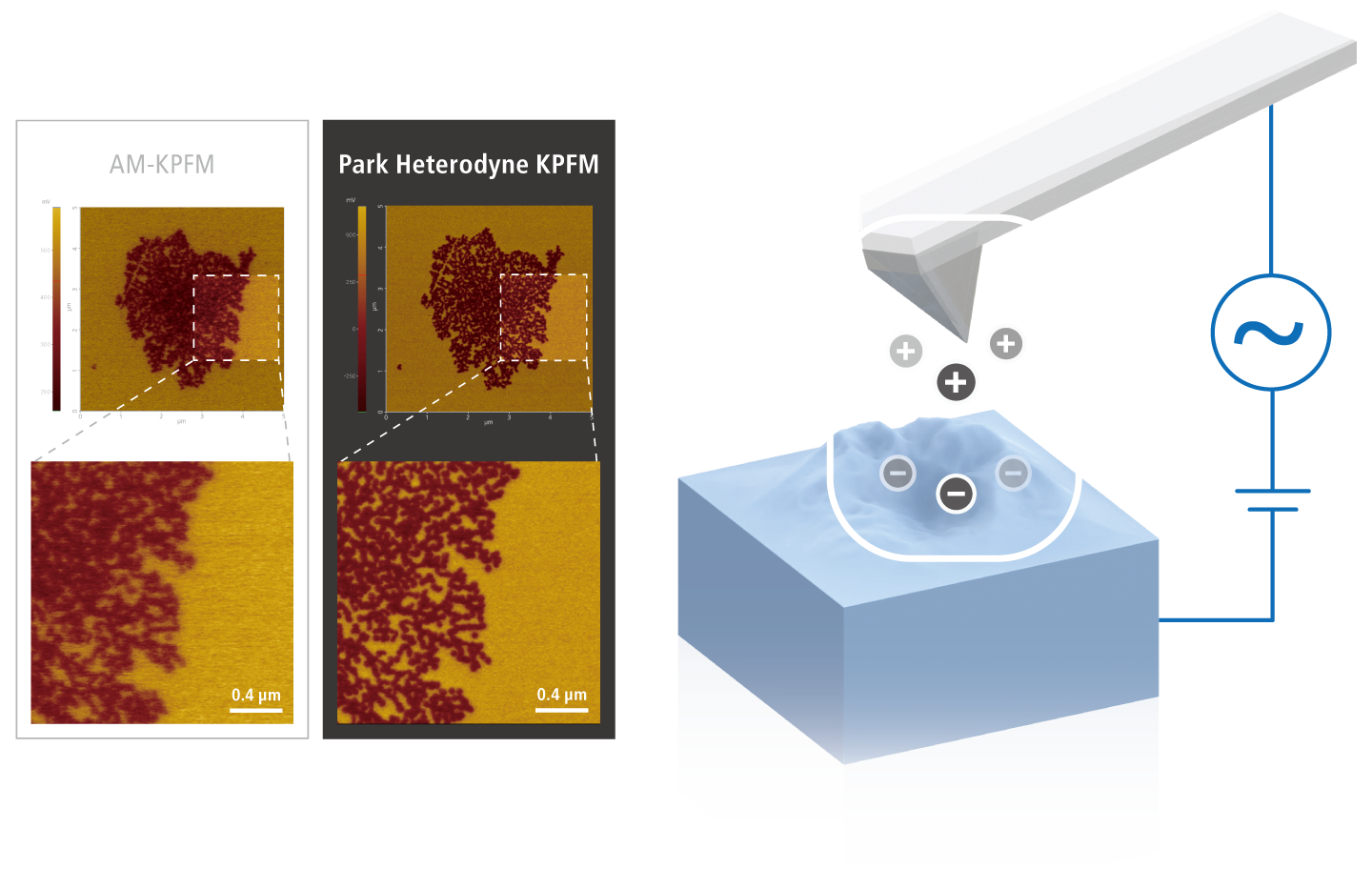
System Compatibility
- • Included in Park FX Series
•
Available via Paid Hardware Upgrade on Park NX Series
* Excluding Park NX15 & NX7
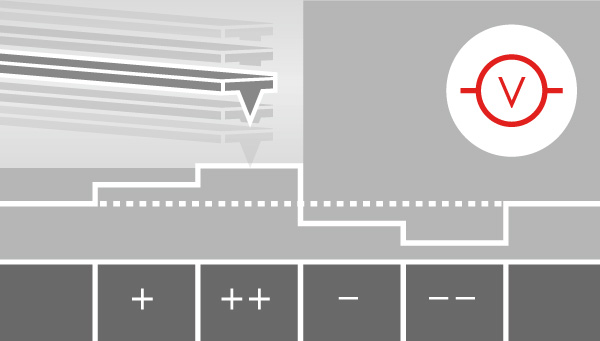
The Heterodyne Effect
How Does it Work?
Kelvin Probe Force Microscopy (KPFM) is a widely used AFM technique for quantitative measurement of surface potential and work function. Park Heterodyne KPFM advances this established method with a novel approach — leveraging second harmonic signal detection, which offers a higher Q factor and significantly reduces topographic crosstalk when measuring contact potential difference (CPD). Optimized for applications such as 2D materials, semiconductors, and nanostructured surfaces, Park Heterodyne KPFM delivers superior clarity and accuracy in nanoscale electrical characterization.
Refined Sensitivity
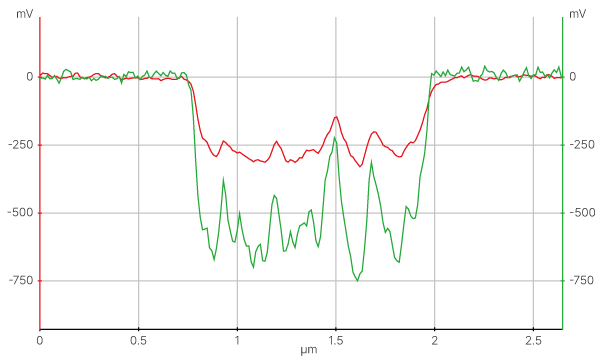
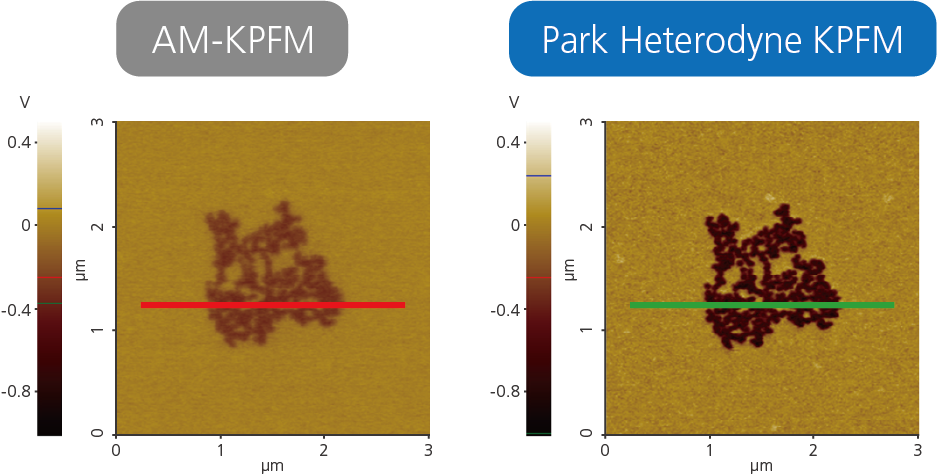
The Park Heterodyne KPFM offers superior resolution and sensitivity compared to traditional KPFM methods by
delivering precise data through accurate signals directed to the closest areas of the AFM's cantilever tip from
the specific desire point. In contrast, *AM-KPFM detects signals from multiple parts, such as the tip end, tip
side, and wide areas of the cantilever, which can cause signal averaging.
*AM-KPFM (Amplitude-Modulation KPFM)
Exceptional Performance in
High Resolution Electrical Studies
High Resolution Electrical Studies
Research results show that the Park Heterodyne KPFM method delivers significantly
more quantitative and reliable results compared to conventional AM-KPFM.
Unlike AM-KPFM, which can be influenced by stray electric fields, Park Heterodyne
KPFM minimizes these effects — achieving up to ~99% agreement with ideal
values, whereas AM-KPFM shows approximately ~60% accuracy. This makes
Park Heterodyne KPFM a powerful choice for precise surface potential mapping,
especially in advanced electrical studies.
*The performance rate showcased here is based on performance tests conducted
in accordance with the methodology outlined in the publication by Amelie
Axt, Ilka M. Hermes, Victor W. Bergmann, Niklas Tausendpfund, and Stefan A.
L. Weber — 'Know your full potential: Quantitative Kelvin probe force
microscopy on nanoscale electrical devices.'
Durable Reliability for Faster Measurements.
Powering Your Research Productivity.
Powering Your Research Productivity.
Experience higher speed measurements without compromising accuracy. Even at
elevated scan speeds Park Heterodyne KPFM delivers spatial resolution
compared to conventional AM-KPFM, helping you save valuable time and
streamline your workflow.
Preserving Spatial Resolution Comparable to AM-KPFM,
Even at 20x Faster Measurement Speeds:
Even at 20x Faster Measurement Speeds:
AM-KPFM
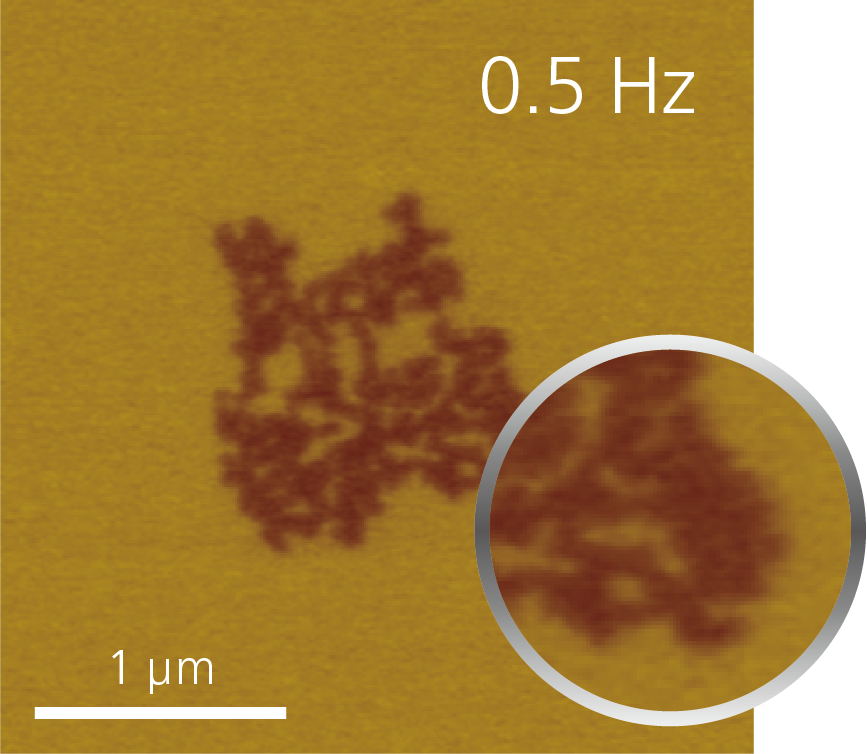
Park Heterodyne KPFM
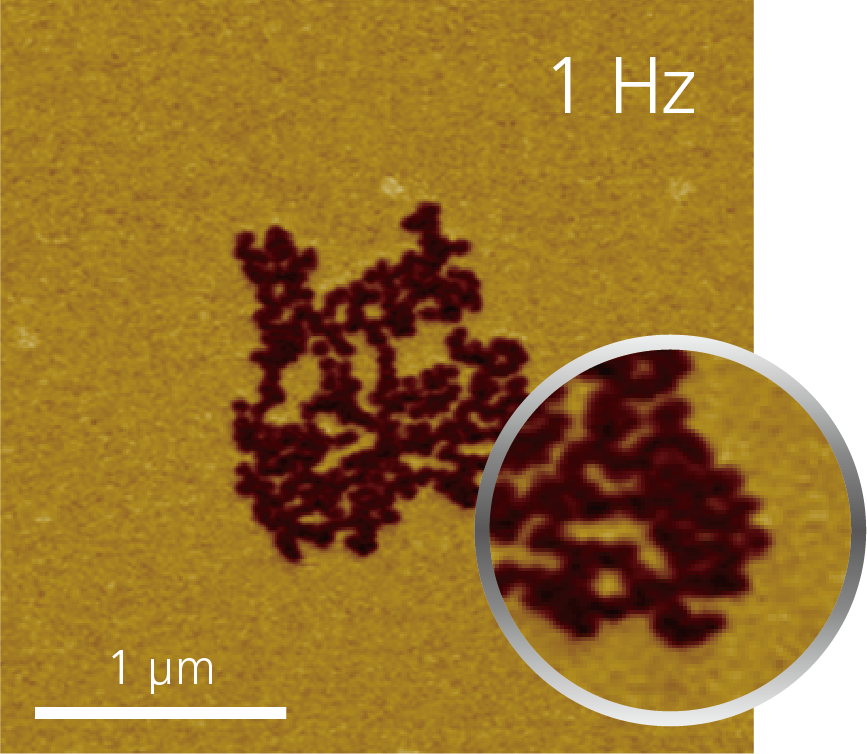
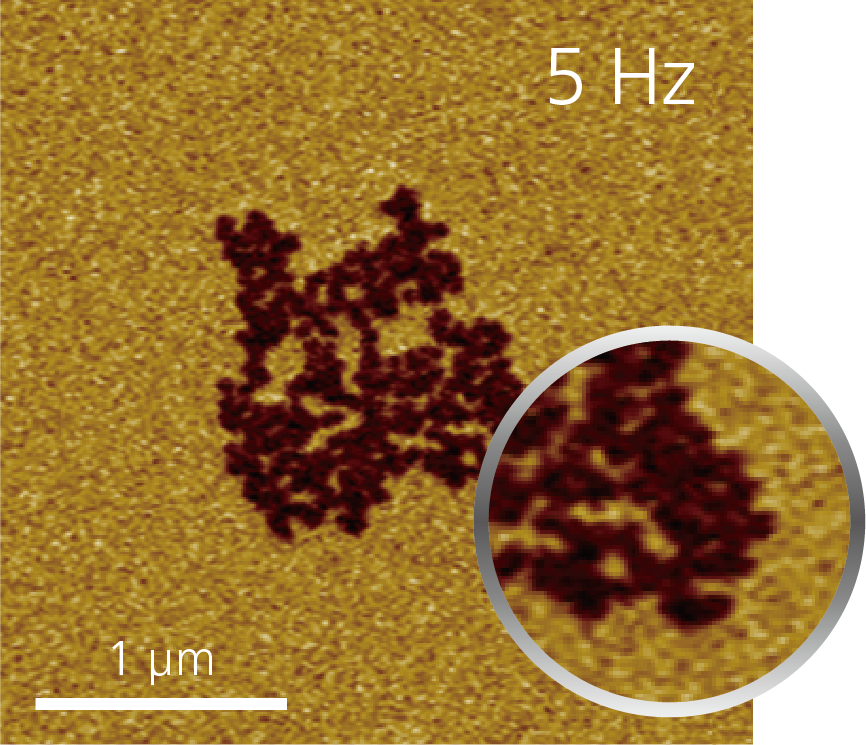

Key Features
Superior Sensitivity
& Resolution
& Resolution
Isolates signals from background noise, ensuring precise nanoscale
measurements.
Localized
Detection
Detection
The heterodyne effect improves signal isolation for enhanced accuracy.
Minimized
Frequency Artifacts
Frequency Artifacts
Avoids limitations seen in traditional KPFM modes.
Ideal for
Diverse Applications
Diverse Applications
Perfect to get diverse electrical properties such as charge
distribution, potential, and work function.
Designed for Various Applications
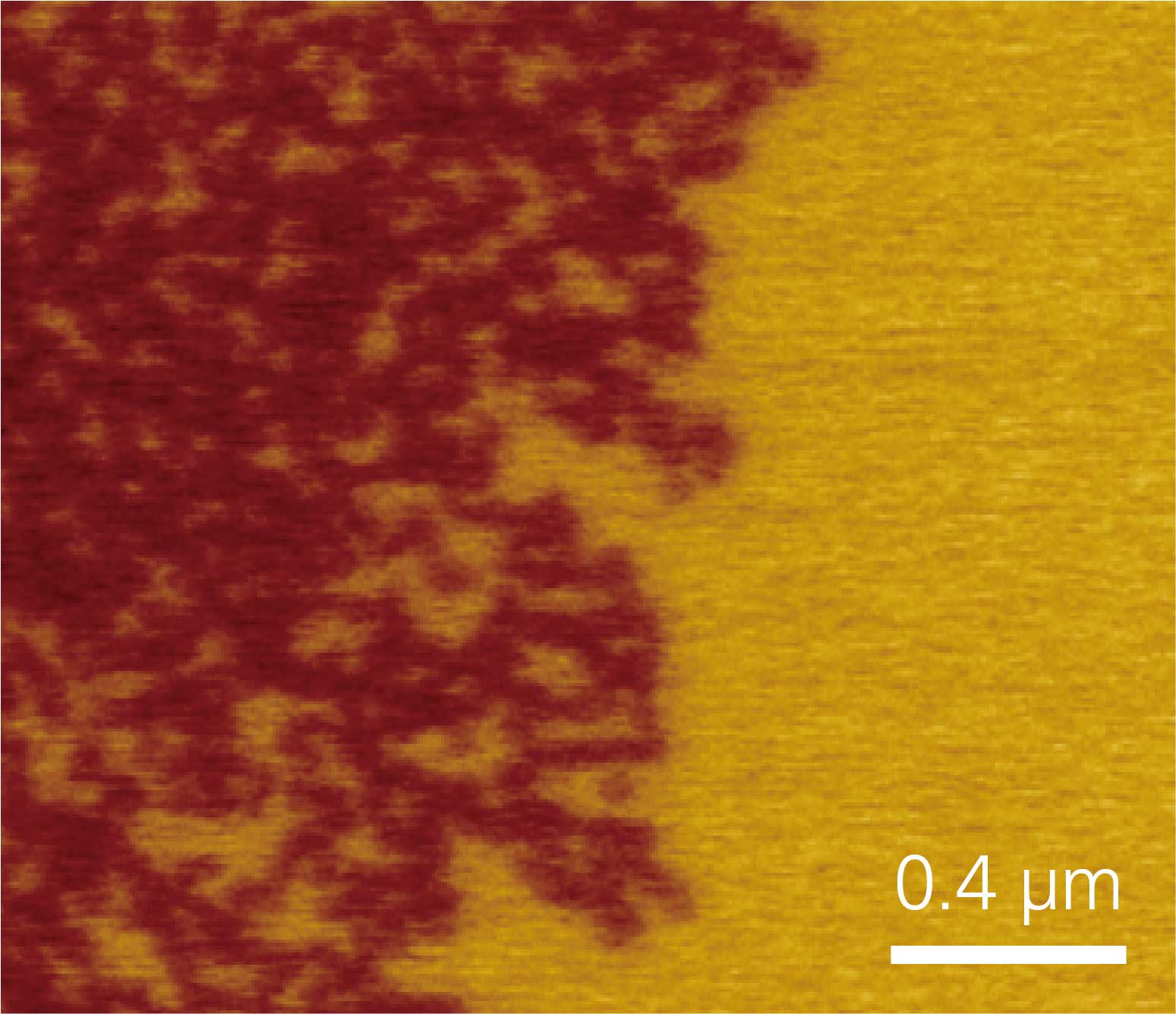
AFM Image Gallery
F14H20
Self-Assembly of the Perfluoroalkyl-Alkane
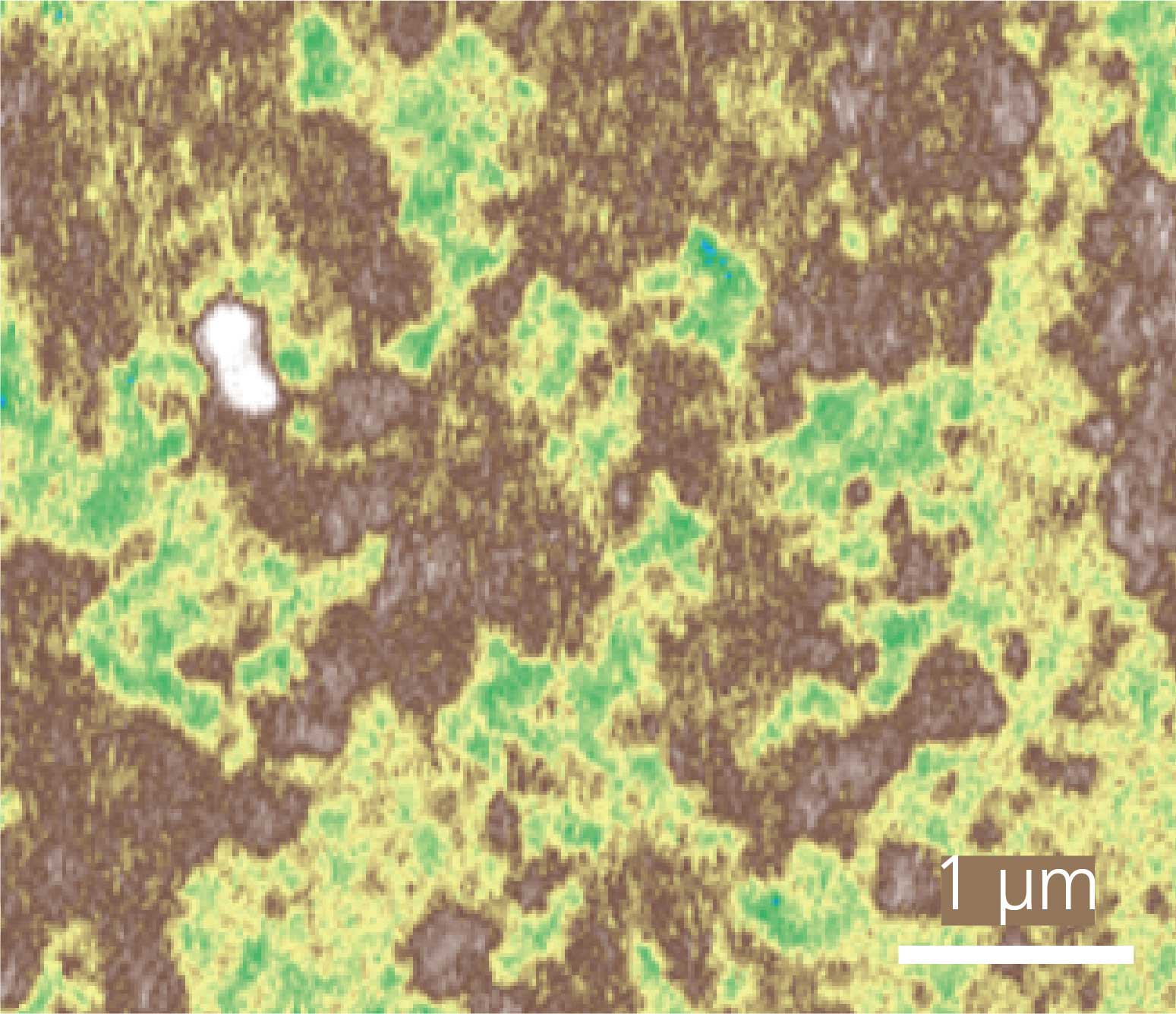
AFM Image Gallery
Hair

AFM Image Gallery
Multi-Layered Graphene on hBN
System Compatibility
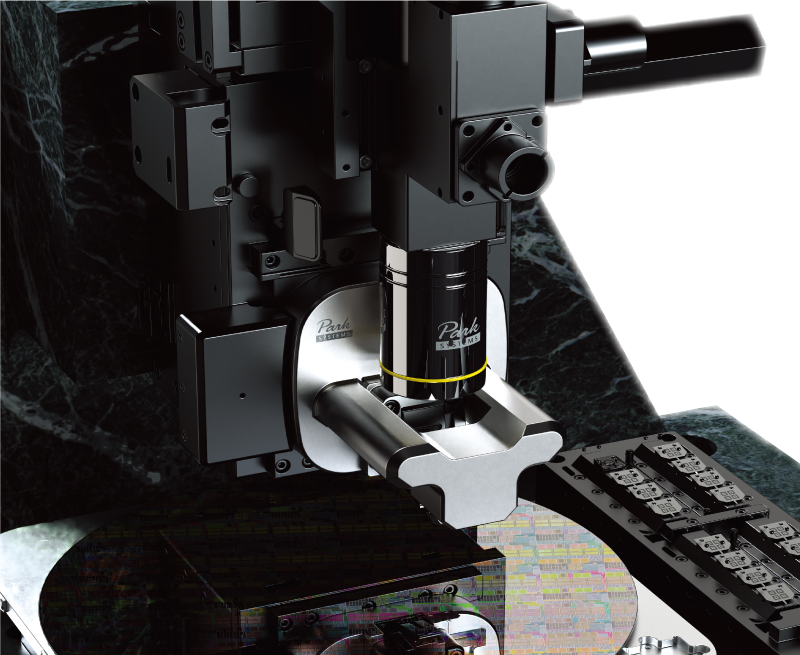
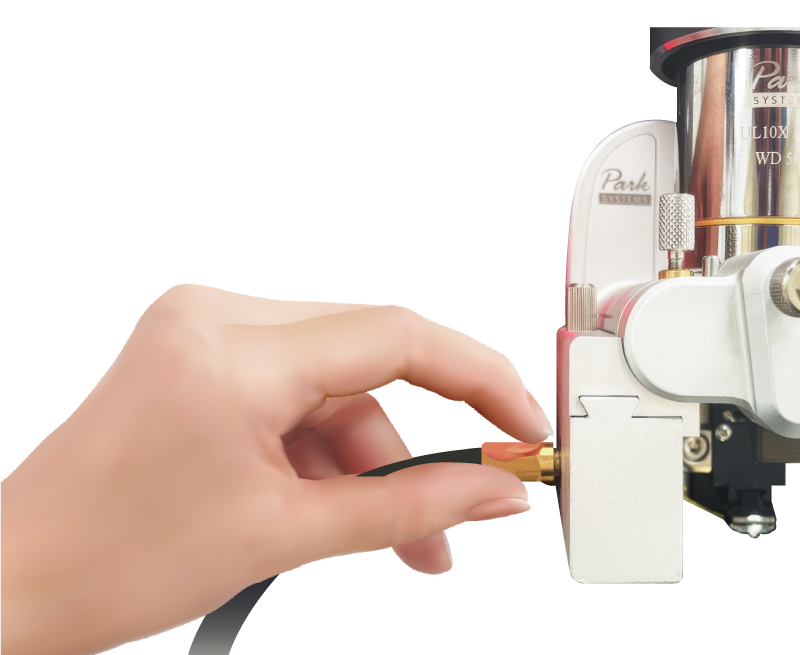
Learn More
Contact a Specialist
Need guidance on Park Heterodyne KPFM?
Our experts are ready to assist you.
Our experts are ready to assist you.
Schedule a Demo with an AFM Expert
Jump into a demo session to measure your sample
with Park Heterodyne KPFM.
with Park Heterodyne KPFM.
Budget Friendly NX-to-FX Trade-In Offer
for Premium FX Performance
for Premium FX Performance
x
x
x
x
x


